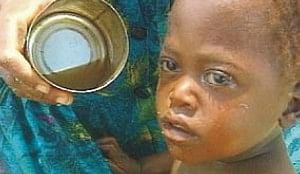Human Rights advocacy
Why
children are victims of aggression?
Pedro
B. Bernaldez
June
4 is the day the United Nations devotes to promoting efforts
to care for innocent children who are victims of all forms
of aggression and violence. Appalled by the great number
of innocent Palestinian and Lebanese child victims of
Israel's acts of aggression, on August 19, 1983 the United
Nations General Assembly decided to designate June 4 of
each year as the International Day of Innocent Children
Victims of Aggression. It reminds people that throughout
the world there are many children suffering from different
forms of abuse, and there is an urgent need to protect
the rights of children.
Violence
has always been, and will remain, an important cause of
stress for children. It is a matter of fact that violence
seems to become more pervasive as the level of economic
development decreases. This ratio seems to be global.
The violence referred to here is not limited to that which
the child is preyed on outside the home. Most often, an
infinitely sad causal chain of victimisation can be perceived
between the perpetrators and the victims of domestic violence.
Domestic
violence is a much greater source of stress for children
than the violence that children perceive outside the home,
stressful as that may be. The aggressor within the home
is usually a parent or a close caregiver, known intimately
by the child and upon whom the child is dependent for
security and "protection,'' as well as for love.
The immediate effect for the child is chaos, a loss of
its sheet anchor. Thus begins the perilous drifting, without
trust, without security, with at best a "dangerous''
love. The child swiftly learns to repress its natural
curiosity, its affection and natural reactions. And the
symptoms of post-traumatic stress disorder appear.

photo:BBC |
Bullying
is a widespread problem in schools and communities. The
behaviour encompasses physical aggression, threats, teasing
and harassment. Although it can lead to violence, bullying
typically is not categorised with more serious forms of
school violence involving weapons, vandalism or physical
harm. It is, however, an unacceptable anti-social behaviour
that is learned through influences in the environment,
such as peer groups and the media. As such, it also can
be unlearned or, better yet, prevented.
The
social and physical environment in which children grow
up has long been linked to their social adjustment in
later life. For children, the school forms a large part
of this socialising environment. In addition to their
overt role in education, schools play a central role in
the transmission of the norms and values, both positive
and negative. One societal norm commonly acquired in the
school environment is the hierarchical social organisation
and the submission of some children by others through
intimidation and aggression.
Of
all the horrors that humankind is heir to, war is arguably
the worst. It is invariably man-made and, therefore, should
be avoidable. A multitude of wars of every description
are being waged all over the globe at present. Children
are the innocent victims of bilateral, multilateral, civil,
guerrilla and ethnic warfare. Children come directly under
fire; they must bear arms; they are the victims of torture,
maiming, and brainwashing. Children are the helpless spectators
of the death, injury, or defeat of their parents; they
are the hapless part of endless migrations caused by the
necessity of fleeing death and destruction. In war-torn
countries, children are initiated into the whirlpool of
violence and later become fighters _ or killers _ themselves.
It
is self-evident that the physical survival of children
must have absolute priority. Yet a great deal of attention
needs to be given to the emotional well being of these
children in order to avoid the many appalling psychological
problems they face as well as in order to break the spiral
of violence that festering emotional wounds lead to from
one generation to the next.
In
the climate of violence and fear wars bring about, some
families manage to protect their children from the worst
emotional damage that war causes. Many, if not most, however,
are physically incapable of doing so. Or they are so overwhelmed
by events that they are themselves in dire need of care
and protection.
The
same applies to the community. Some communities manage
to harbour their children against the rigors of war. Others,
themselves exhausted, can do little. It is then up to
the national and local governments, civil sectors and
the international community to provide succor.
In
the very short term, it is of course a humane and moral
imperative to help child victims of war in every possible
way.
For
those of us who wish to see war obliterated from the face
of the earth, however, it may well be the height of rational
self-interest, in the long term, to invest heavily in
the moral and emotional well-being of the children of
war, in order to eradicate as much as possible the impulses
to violence and aggression implanted in them by their
experiences.
Source:
Korea Times.